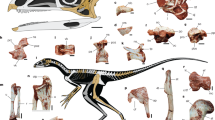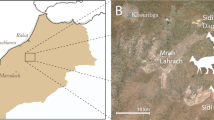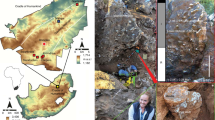Abstract
IT is almost a hundred years since the first Anomodont reptile was discovered in South Africa by Andrew Geddes Bain. This skull was sent to Owen and in 1844 he described it under the name Dicynodon lacerticeps. Numerous other Dicynodon skulls were afterwards sent to London and are now in the British Museum (Natural History). The typical Dicynodon is very mammal-like in much of its structure, but is remarkable in having had a horny beak something like that of the tortoise, with in addition in the male a powerful permanently growing tusk in each maxilla and no other teeth.
This is a preview of subscription content, access via your institution
Access options
Subscribe to this journal
Receive 51 print issues and online access
$199.00 per year
only $3.90 per issue
Buy this article
- Purchase on Springer Link
- Instant access to full article PDF
Prices may be subject to local taxes which are calculated during checkout
Similar content being viewed by others
Author information
Authors and Affiliations
Rights and permissions
About this article
Cite this article
BROOM, R. A New Type of Anomodont Reptile. Nature 135, 583–584 (1935). https://doi.org/10.1038/135583b0
Issue Date:
DOI: https://doi.org/10.1038/135583b0
Comments
By submitting a comment you agree to abide by our Terms and Community Guidelines. If you find something abusive or that does not comply with our terms or guidelines please flag it as inappropriate.



